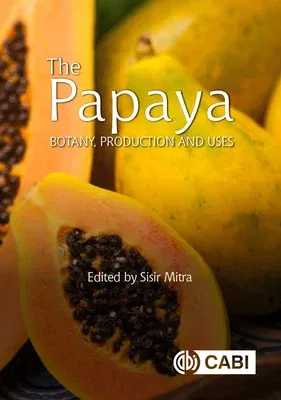The Papaya: Botany, Production and UsesHardcover, 26 October 2020

Qty
1
Turbo
Ships in 2 - 3 days
In Stock
Free Delivery
Cash on Delivery
15 Days
Free Returns
Secure Checkout

Part of Series
Botany, Production and Uses
Part of Series
Agriculture
Print Length
280 pages
Language
English
Publisher
Cabi
Date Published
26 Oct 2020
ISBN-10
1789241901
ISBN-13
9781789241907
Description
Product Details
Book Format:
Hardcover
Country of Origin:
GB
Date Published:
26 October 2020
Dimensions:
24.64 x
17.53 x
2.03 cm
ISBN-10:
1789241901
ISBN-13:
9781789241907
Language:
English
Pages:
280
Publisher:
Weight:
898.11 gm